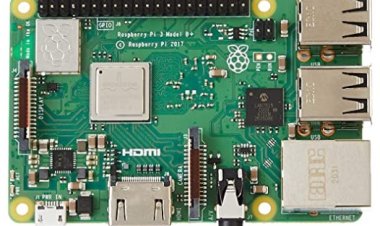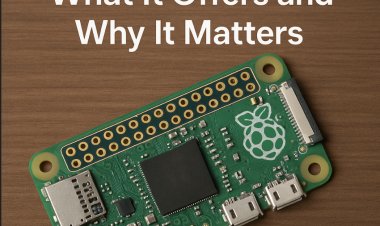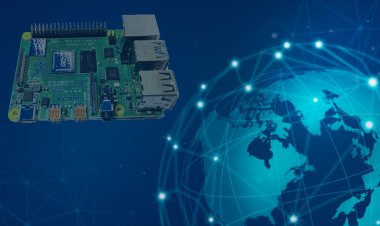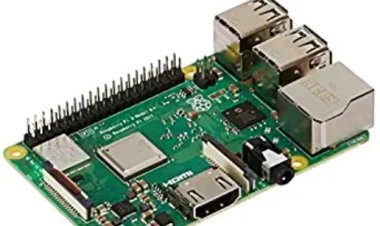Unleash the Full Potential of Raspberry Pi 5 Connectivity: Simple, Reliable, and Powerful Guide
Discover the secrets to flawless Raspberry Pi 5 connectivity. Easy setup guide & expert tips inside!
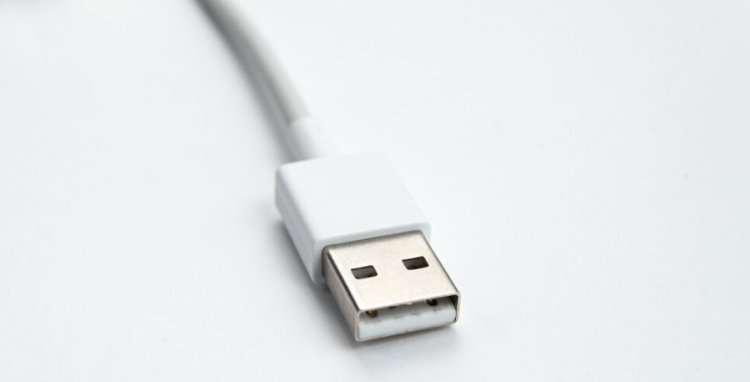
Introduction to Raspberry Pi 5 Connectivity
The Raspberry Pi 5 represents a significant advancement in the Raspberry Pi series, offering enhanced connectivity options that cater to a wide range of applications and use cases. Here’s an overview of its key connectivity features:
Network Interfaces
- Gigabit Ethernet: The Raspberry Pi 5 includes a Gigabit Ethernet port, providing high-speed wired network connectivity up to 1 Gbps. This offers improved performance for network-intensive applications, such as media streaming and file transfers, and ensures a stable and reliable connection compared to previous models.
- Dual-Band Wi-Fi: It supports dual-band Wi-Fi (2.4 GHz and 5 GHz), enhancing wireless network performance and flexibility. The dual-band capability reduces congestion and interference, improving connection stability and speed, which is particularly useful in environments with many devices.
USB Ports
- USB 3.0 Ports: The Raspberry Pi 5 features multiple USB 3.0 ports, enabling faster data transfer rates up to 5 Gbps. This allows for quicker access to external storage devices and improved performance for peripherals such as high-speed cameras or external drives.
- USB 2.0 Ports: In addition to the USB 3.0 ports, it retains USB 2.0 ports for compatibility with standard peripherals like keyboards and mice. These ports continue to support a wide range of devices and accessories.
GPIO Pins and Expansion
- 40-Pin GPIO Header: The Raspberry Pi 5 maintains the 40-pin GPIO header compatible with previous models, allowing for extensive hardware integration and customization. This header supports various functionalities including GPIO, I²C, SPI, and UART, making it ideal for building custom electronics projects.
- HAT Support: It continues to support HAT (Hardware Attached on Top) expansion boards, which can stack directly onto the GPIO header. HATs provide additional functionality and ease of use, with features like automatic configuration and enhanced connectivity options.
Other Connectivity Features
- Improved Audio Output: The Raspberry Pi 5 offers enhanced audio output capabilities, including support for high-definition audio through its integrated audio interface.
- Display Interfaces: It includes multiple display interfaces, such as HDMI and MIPI DSI, supporting high-resolution displays and advanced graphical applications.
The Raspberry Pi 5’s advanced connectivity features make it a versatile platform suitable for a wide range of applications, from complex computing tasks and media centers to custom electronics and IoT projects.
Network Connection points on Raspberry Pi 5: Gigabit Ethernet and Wi-Fi 6
The Raspberry Pi 5 acquaints critical updates with its organization network, improving both wired and remote execution to fulfill the needs of current applications.
Gigabit Ethernet
- Speed and Dependability: The Raspberry Pi 5 highlights a Gigabit Ethernet port, offering network speeds up to 1 Gbps. This gives a significant lift over the Quick Ethernet (100 Mbps) tracked down in past models, bringing about quicker information moves and further developed network execution.
- Applications: The sped up is valuable for undertakings requiring high data transmission, for example, huge document moves, web based superior quality video, and working organization serious applications. The Gigabit Ethernet association guarantees a steady and dependable wired network association, ideal for circumstances where predictable execution is basic.
Wi-Fi 6
- High level Remote Innovation: The Raspberry Pi 5 integrates Wi-Fi 6 (802.11ax), the most recent age of remote systems administration innovation. Wi-Fi 6 offers further developed speed, productivity, and limit contrasted with past norms.
- Upgraded Execution: Wi-Fi 6 gives quicker remote velocities and better execution in conditions with many associated gadgets. It upholds higher information rates, diminished idleness, and expanded generally network proficiency, which is especially helpful in occupied or high-thickness organizations.
- Further developed Availability: The innovation additionally incorporates highlights like Symmetrical Recurrence Division Numerous Entrance (OFDMA) and Target Wake Time (TWT), which improve network limit and proficiency, taking into consideration more gadgets to associate and convey all the while without corrupting execution.
Together, the Gigabit Ethernet and Wi-Fi 6 on the Raspberry Pi 5 address a huge jump in network capacities, making it reasonable for requesting organizing undertakings and giving a future-confirmation answer for superior execution applications.
USB Ports and Fringe Associations on Raspberry Pi 5
The Raspberry Pi 5 offers a scope of USB ports intended to improve network and extend the capacities of the board, supporting various peripherals and extras.
USB 3.0 Ports
- High velocity Information Transfer: The Raspberry Pi 5 incorporates a few USB 3.0 ports, which give information move speeds up to 5 Gbps. This rapid is great for associating outer capacity gadgets, high-goal cameras, and different peripherals that require quick information access.
- Execution Improvement: USB 3.0 ports fundamentally lessen bottlenecks experienced with USB 2.0, offering a smoother experience for errands that include a lot of information, like video altering or fast information securing.
USB 2.0 Ports
- Similarity and Versatility: The board likewise holds USB 2.0 ports, which are viable with a great many peripherals, including consoles, mice, printers, and more established outside drives. USB 2.0 gives information move speeds up to 480 Mbps, which is adequate for the majority standard peripherals.
- Power Management: These ports can be valuable for gadgets that don't need the rapid of USB 3.0, assisting with overseeing power utilization and decrease generally speaking burden on the framework.
Fringe Integration
- Outside Storage: Interface outer hard drives or glimmer drives through USB 3.0 for quick admittance to extra capacity, ideal for media focuses, document servers, and information weighty ventures.
- Input Devices: Append input gadgets like USB consoles and mice for simple control and route. The mix of USB 2.0 and USB 3.0 ports guarantees that numerous information gadgets can be associated without execution issues.
- Other Peripherals: The USB ports support different peripherals, including webcams, sound points of interaction, and organization connectors. The adaptability of having both USB 2.0 and USB 3.0 permits clients to interface and deal with a wide exhibit of gadgets.
By and large, the Raspberry Pi 5's USB ports and fringe associations upgrade its flexibility, making it appropriate for a wide scope of utilizations, from ordinary processing to particular equipment projects.
GPIO Pins, GPIO Expansion, and HATs on Raspberry Pi 5
The Raspberry Pi 5 continues to offer extensive GPIO (General Purpose Input/Output) capabilities, expanding its versatility for hardware projects and custom applications.
GPIO Pins
- 40-Pin Header: The Raspberry Pi 5 features a 40-pin GPIO header, which provides a range of digital input/output pins that can be used for various tasks. These pins allow for direct interaction with external hardware, such as sensors, motors, and LEDs.
- Pin Configuration: The GPIO header includes several pins for different functions, including GPIO, power (3.3V and 5V), ground, and communication interfaces like I²C, SPI, and UART. This configuration supports a wide array of hardware projects and customizations.
GPIO Expansion
- Breadboard and Custom Circuits: The GPIO pins can be easily connected to a breadboard for prototyping and testing custom circuits. This flexibility allows users to create and test electronic designs without needing specialized equipment.
- Expansion Boards: For more complex projects, expansion boards or "HATs" (Hardware Attached on Top) can be used to extend the functionality of the GPIO pins. These boards connect directly to the GPIO header and can add additional features such as additional inputs/outputs, sensors, or communication interfaces.
HATs (Hardware Attached on Top)
- Standardized Expansion Boards: HATs are designed to stack on top of the Raspberry Pi 5 and provide additional functionality. Each HAT board includes an EEPROM (Electrically Erasable Programmable Read-Only Memory) that stores metadata about the board, including its manufacturer, version, and specific features.
- Plug-and-Play Functionality: HATs offer plug-and-play capabilities, simplifying the integration of additional hardware. The metadata stored in the EEPROM helps the Raspberry Pi OS automatically configure the HAT board, making it easier to get started with new hardware.
- Common Uses: HATs can include various types of expansion, such as additional GPIO pins, motor controllers, environmental sensors, or displays. This modular approach allows for easy upgrades and expansions to suit different project needs.
Overall, the GPIO pins, expansion options, and HAT compatibility on the Raspberry Pi 5 provide robust support for a wide range of hardware projects, making it an excellent choice for hobbyists, educators, and developers looking to build and experiment with custom electronics.
Investigating and Execution Streamlining for Raspberry Pi 5
Guaranteeing smooth activity and ideal execution of your Raspberry Pi 5 includes resolving normal issues and tweaking the framework. Here is a manual for investigating and enhancing your Raspberry Pi 5:
Investigating Normal Issues
- Power Supply Problems
-
- Issue: Deficient or unsteady power supply can cause arbitrary reboots or inability for sure.
- Solution: Utilize an excellent 5V, 3A power supply that meets the Raspberry Pi 5's necessities. Guarantee the power link is in great shape and appropriately associated.
- Boot Issues
-
- Issue: The Raspberry Pi 5 may not boot on the off chance that there are issues with the SD card or operating system.
- Solution: Check that the SD card is accurately embedded and not ruined. Reflash the operating system utilizing devices like Balena Etcher and guarantee it's viable with the Raspberry Pi 5.
- Network Network Problems
-
- Issue: Issues with Ethernet or Wi-Fi network can happen because of arrangement mistakes or equipment issues.
- Solution: Actually take a look at network settings, confirm the association with the switch or switch, and guarantee Wi-Fi certifications are accurately placed. Update the framework programming to determine any firmware issues.
- Peripheral Malfunctions
-
- Issue: USB peripherals like consoles, mice, or outer drives probably won't work as expected.
- Solution: Test peripherals on different gadgets to guarantee they are practical. Attempt different USB ports on the Raspberry Pi 5 and ensure the gadgets are appropriately controlled.
Execution Streamlining
- System Updates
-
- Action: Routinely update the framework to guarantee you have the most recent programming and security patches.
- Command: Run 'sudo adept get update' and 'sudo well-suited get move up' to keep the operating system and introduced bundles modern.
- Overclocking
-
- Action: In the event that more presentation is required, consider overclocking the Raspberry Pi 5. In any case, this can increment power utilization and intensity.
- Method: Change the '/boot/config.txt' record to change the computer processor recurrence settings, yet screen the framework's solidness and temperature.
- Cooling Solutions
-
- Action: To forestall overheating and guarantee stable execution, use cooling arrangements like heatsinks or fans.
- Solution: Connect heatsinks to the central processor and GPU, and consider adding a fan to further develop wind current around the board.
- Optimizing Storage
-
- Action: Utilize high velocity SD cards or outside SSDs to work on read/compose execution.
- Method: Pick cards or drives with high IOPS (Info/Result Activities Each Second) and low inactivity to accelerate information access.
- Memory Management
-
- Action: Oversee memory use by streamlining programming and administrations running on the Raspberry Pi 5.
- Method: Use devices like 'htop' to screen memory utilization and stop superfluous administrations or applications to let loose assets.
By resolving normal issues and carrying out these exhibition improvements, you can upgrade the unwavering quality and productivity of your Raspberry Pi 5 connectivity, guaranteeing it performs well for your different ventures and applications.



